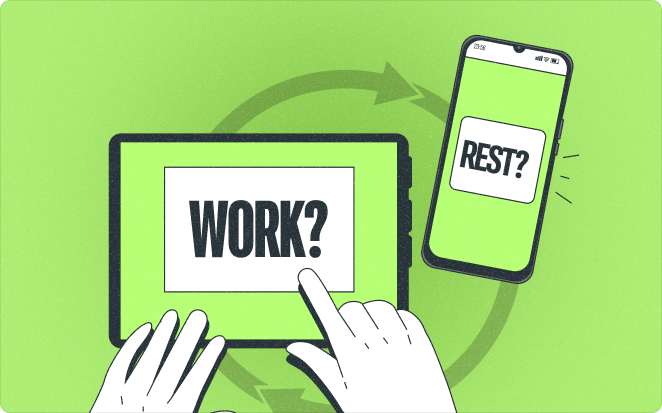Workforce Productivity What It Is How To Improve It

Workforce productivity is a critical aspect for organizations aiming to achieve success and growth in today’s competitive business landscape. Understanding what it entails and how to enhance it can greatly impact the overall performance and profitability of a company.
So, what exactly is workforce productivity? It refers to the measure of an employee’s efficiency and output within a given timeframe. It takes into account factors like engagement, performance, and the utilization of resources to achieve desired goals.
The importance of workforce productivity cannot be overstated. It directly affects the organization’s ability to meet customer demands, remain competitive, and maximize profitability.
Several factors influence workforce productivity. Employee engagement plays a crucial role as it determines the level of commitment, motivation, and satisfaction within the workforce. The work environment also significantly impacts productivity, including factors like physical surroundings, tools, and technologies. Effective leadership and management practices, as well as ongoing training and skill development opportunities, contribute to improved productivity levels.
Now, let’s explore how organizations can improve workforce productivity through various strategies and initiatives. Setting clear goals and expectations, providing adequate resources, encouraging collaboration and communication, offering work-life balance, recognizing and rewarding performance, investing in employee development, and nurturing a positive work culture are all key approaches to enhance productivity levels.
Measuring and tracking workforce productivity is also essential to identify areas for improvement and monitor progress. Metrics such as revenue per employee, task completion rates, and customer satisfaction scores can be used to evaluate productivity levels. Implementing reliable tracking and monitoring systems allows organizations to gather data, analyze trends, and make informed decisions.
By understanding and prioritizing workforce productivity, organizations can create a more efficient and thriving work environment that contributes to sustainable success.
Understanding Workforce Productivity
To comprehend the productivity of the workforce, it is imperative to analyze the effectiveness and efficiency of employees in achieving their goals. Factors such as communication, work environment, and employee satisfaction have an impact on productivity. Employers can foster productivity by offering appropriate training, establishing clear expectations, and nurturing a positive workplace culture.
What is Workforce Productivity?
What is Workforce Productivity? is a phrase that refers to the overall efficiency and effectiveness of a workforce in achieving organizational goals. It measures the output of work relative to the input of resources. Factors such as employee engagement, work environment, leadership, and skill development impact productivity. To improve What is Workforce Productivity?, it is important to set clear goals, provide resources, promote collaboration, and offer work-life balance. A pro-tip for enhancing What is Workforce Productivity? is to regularly evaluate and adjust strategies to ensure continuous productivity improvement.
Why is Workforce Productivity Important?
Workforce productivity is crucial for the success of any organization. It directly impacts profitability, efficiency, and overall performance. A productive workforce leads to increased output, reduced costs, and improved customer satisfaction. It also boosts employee morale and engagement, resulting in lower turnover rates. In summary, prioritizing workforce productivity is essential for long-term success.
In the early 20th century, Henry Ford revolutionized the automotive industry with the introduction of the assembly line, significantly increasing productivity. This innovation not only enabled mass production but also helped shape modern manufacturing practices. Ford’s emphasis on efficiency and productivity set a precedent for industries worldwide.
Get more out of your business
Get the best employee engagement content every week via mailing list

Factors Affecting Workforce Productivity
Discover the key ingredients that influence workforce productivity and unlock the full potential of your team. From employee engagement to work environment, leadership, and training, we’ll explore the factors that play a pivotal role in driving efficiency and success. Tap into the power of these sub-sections: employee engagement, work environment, leadership and management, and training and skill development. Get ready to supercharge your organization and create a thriving work culture. Let’s dive in!
1. Employee Engagement
2. Work Environment
A conducive work environment plays a crucial role in enhancing workforce productivity. Creating an ideal work environment by considering factors such as office layout, lighting, temperature, and noise levels can greatly impact employee efficiency and job satisfaction. By providing ergonomic workstations, comfortable seating, and designated spaces for collaboration, organizations can cultivate a positive and productive work environment.
3. Leadership and Management
Effective leadership and management are crucial elements that have a significant impact on workforce productivity. A robust leadership team plays a pivotal role in ensuring efficient communication, establishing attainable objectives, offering essential resources, and promoting a favorable work culture. Skillful management practices, including proficient delegation and recognition of employees’ performances, have the power to inspire and enhance productivity.
4. Training and Skill Development

Ways to Improve Workforce Productivity
Boosting workforce productivity is not just a desire, but a need in today’s competitive landscape. In this section, we will explore actionable ways to enhance productivity in the workplace. From setting clear goals and expectations to fostering a positive work culture, each sub-section will uncover practical strategies to maximize individual and team performance. With a focus on providing adequate resources, encouraging collaboration, and recognizing employee achievements, we will unveil the key drivers behind an empowered and motivated workforce.
1. Set Clear Goals and Expectations
Setting clear goals and expectations is vital for enhancing workforce productivity. By setting out clear objectives and anticipated results, employees can align their efforts more effectively. This clarity provides them with a clear sense of direction and purpose, enabling them to prioritize tasks and work more efficiently. Well-defined goals and expectations help minimize ambiguity and misunderstandings, creating a productive and focused work environment.
2. Provide Adequate Resources
Providing adequate resources is essential for enhancing workforce productivity. This encompasses furnishing employees with the essential tools, equipment, and technology to effectively carry out their tasks. It also entails guaranteeing that they have ample training and support to enrich their skills and knowledge. By implementing these measures, organizations can empower their employees to maximize their potential and attain heightened levels of productivity.
3. Encourage Collaboration and Communication
Encouraging collaboration and communication in the workplace is key for enhancing workforce productivity.
4. Offer Work-Life Balance
5. Recognize and Reward Performance
Pro-Tip: Remember to tailor recognition and rewards to individual preferences while aligning them with organizational goals.
6. Invest in Employee Development
To enhance workforce productivity, it is imperative to invest in employee development. Here are six effective ways to invest in your employees:
7. Foster a Positive Work Culture

| Measuring and Tracking Workforce Productivity | Tracking Workforce Productivity |
|---|---|
| Time tracking | Performance evaluations |
| Output per employee | Goal setting and progress tracking |
| Employee surveys | Employee feedback and engagement surveys |
What Metrics can be Used to Measure Workforce Productivity?
Metrics such as employee turnover rates, revenue per employee, and absenteeism can be used to measure workforce productivity. Other useful metrics include employee satisfaction scores, customer satisfaction ratings, and the number of successful projects completed. These metrics provide valuable insights into the efficiency and effectiveness of a workforce.
To measure workforce productivity, various metrics can be employed. These metrics encompass factors such as employee turnover rates, revenue per employee, and absenteeism. Additionally, employee satisfaction scores, customer satisfaction ratings, and the number of successful projects completed serve as valuable metrics. By utilizing these metrics, one can gain valuable insights into the efficiency and effectiveness of the workforce.
How to Track and Monitor Workforce Productivity?
To efficiently track and monitor workforce productivity, follow these steps:
Frequently Asked Questions
How can organizations improve workforce productivity?
There are several practical ways that organizations can improve workforce productivity. These include enhancing employee engagement and morale, creating positive working conditions, providing better incentives and training, implementing flexible schedules, removing tech distractions, optimizing communication protocols, and offering learning opportunities.
Why is employee morale important for workforce productivity?
Employee morale plays a crucial role in workforce productivity. When employees are engaged and have high morale, they are more motivated to perform their best, resulting in improved job performance and successful outcomes. Boosting employee morale can be achieved through various means, such as recognizing and rewarding their achievements, creating an employee-friendly environment, and providing opportunities for growth and development.
How can organizations enhance employee onboarding to improve workforce productivity?
To enhance employee onboarding and improve workforce productivity, organizations can implement an effective onboarding program. This program should focus on integrating new employees into the company culture, aligning them with the organization’s goals, providing necessary training and resources, and fostering a sense of empowerment and involvement from the beginning.
What are some practical ways to improve workplace conditions?
Improving workplace conditions can significantly impact workforce productivity. Organizations can consider implementing changes such as optimizing the physical environment by incorporating natural light and plant life, enhancing office communication networks, creating positive and supportive relationships among employees, and finding better ways of working that eliminate unnecessary tasks and promote efficiency.
How can organizations measure and track workforce productivity?
Organizations can measure and track workforce productivity using various methods and tools. One approach is establishing performance metrics for individuals or departments, focusing on tasks completed rather than merely hours worked. Software platforms with workforce management features can provide real-time data on hours worked, productivity benchmarks, app and tool usage, project tracking, and recognition for productive team members.


